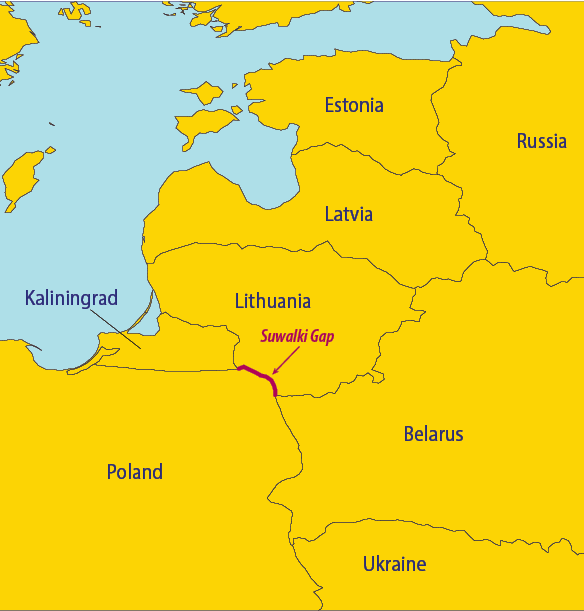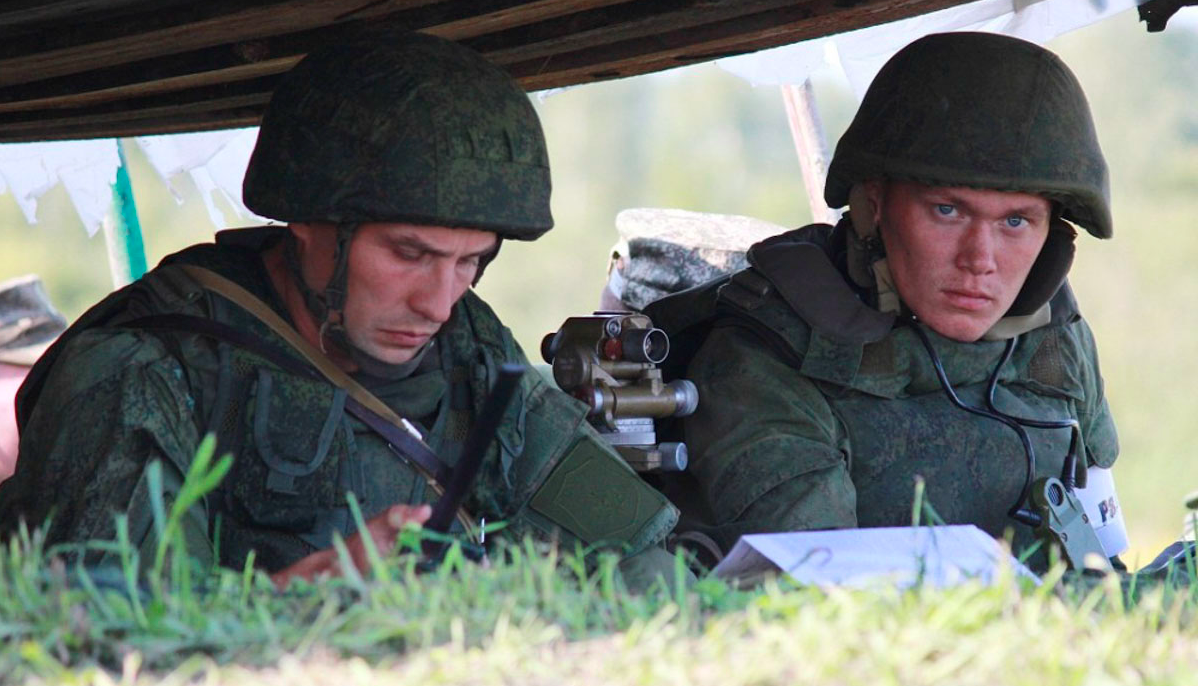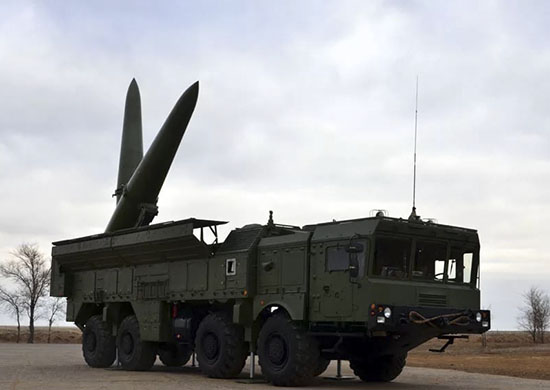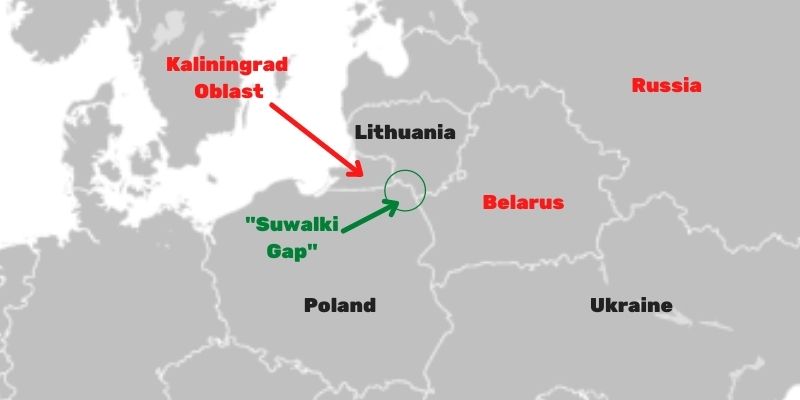RUSSIA/EUROPE: Even if you’ve been closely following the developing situation in Ukraine, through all the hypothetical-fueled tension and political posturing, there is a key region of Eastern Europe that you might not know much about, or perhaps haven’t even heard of. You can hardly be blamed if you overlooked the Kaliningrad Oblast in your studies of European geography, but the isolated Russian region is of significant military importance and warrants a share of the discussion as the potential for a NATO-Russia armed conflict looms.

Related: Russia says it won’t start a war in Ukraine as tensions rise
So how did a 5,800-square-mile (slightly larger than Connecticut) piece of Russia get out there on its own? As is the case with many of the territorial lines drawn in Eastern Europe, it goes back to World War II. In the period between the World Wars, the Baltic nations of Estonia, Latvia and Lithuania had been established and all three fought off advances by both the Germans and the Russians/ Soviets to maintain their independence. That is, until Nazi Germany began menacing all of Europe.
Often lost in the lore of the largest conflict the world has ever seen is that the Soviet Union wasn’t exactly one of the “good guys” until Hitler launched Operation Barbarossa in June of 1941. Just over a year prior to that, Paris fell to German troops, and Josef Stalin (correctly) assumed Hitler’s focus would now shift back to the East. Stalin invaded, and took with ease, all three Baltic republics and installed Soviet-friendly governments in nations that had a relatively small Communist following up to that point. The Baltic nations’ “independence” was purely academic now, as they fell squarely under the Soviet sphere of influence for the next five decades.
Kaliningrad, however, was ceded to Russia as part of the Potsdam Conference of July 1945. Following the surrender of Germany, new U.S. President Harry Truman, unfortunately, had some significantly bigger fish to fry than territorial squabbles and sovereignty of the Baltic states, most notably ending the war with Japan. Playing ball with Stalin and keeping him amenable to the U.S. was nothing new; Franklin Roosevelt had done it since the U.S. and Soviets became unlikely allies. The declaration of war from their Soviet neighbors, and not the atomic bombs dropped on Hiroshima and Nagasaki, is often argued to be the true motivation behind Japan’s surrender (logic suggests the truth lies somewhere in between).

Related: How the National Security Act of 1947 changed the US military forever
Fast forward to the early ’90s, and the dissolution of the Soviet Union. The territory of Kaliningrad was, in fact, still Russian, but what had been a bridge for safe passage to the Russian mainland was now a de facto wall of Western-friendly nations. All three Baltic states applied for membership to NATO in March of 2004 and joined the European Union by May. Russia and Lithuania worked out an agreement to allow for easier passage to and from Kaliningrad, but Lithuania’s recent sanctions against Russian ally Belarus may be a sign that agreement is strained as well.
Due to its proximity to Western nations, Kaliningrad was always a highly militarized region in the days of the Cold War. Russia drew down its military presence there in the years after the fall of the Soviet Union, but has raised eyebrows by bolstering their force there since 2016. Globalsecurity.org places the total amount of Russian troops stationed there anywhere from 100,000 to 200,000. That is obviously a very wide range, and these figures are fluid and kept somewhat guarded by the governments involved. However, even that very general estimate, when compared with the current troop buildup on Ukraine’s border, is certainly worthy of attention, especially when the arrow on Russia’s military investment in the area is pointing up.

Related: Russia’s high profile weapons are all smoke and mirrors
Kaliningrad is strategically vital, not only in its proximity and symbolic defiance to NATO, but in being a warm-water port for Russia (“warm water” being a relative term meaning that the harbor does not ice over in winter time). The port city of Baltiysk is home to most of Russia’s Baltic Naval Fleet.
While the offensive capabilities of Russia’s Navy positioned here are limited, “The fleet’s primary strength instead comes from its many smaller vessels,” notes The National Interest’s Sebastian Roblin. “… Nineteen missile-armed corvettes, backed up by three Parchim-class anti-submarine corvettes. Though these small vessels are short-legged and can’t take much punishment, their missiles have long reach and hit hard enough to pose a deadly threat even to large warships.”
Perhaps most notable out of the weapons reportedly in Kaliningrad is the arsenal of missiles, headlined by at least 24 nuclear-capable Iskander-M short-range ballistic missiles (SRBM). The Iskander (NATO reporting name “SS-26 Stone”) missiles have a theoretical range of 500 kilometers (roughly 310 miles), putting Berlin, Warsaw and even Northwest Ukraine within their reach.

Related: Where do NATO reporting names come from?
As noted by Sarah White of 19fortyfive.com, the current concentration of troops and equipment reveals a very high level of readiness for conflict with NATO, at best. At worst, Kaliningrad is an already-established “beachhead” should Russia choose to initiate a two-front war if the situation in Ukraine boils over.
While Kaliningrad lies approximately 300 miles from “Russia Proper,” an offensive originating in Kaliningrad wouldn’t need to go nearly that far to link with up with Russian forces and sever the Baltic states from the rest of NATO. Russian troops are now positioned all along the Ukrainian border of Belarus. The 60-mile stretch of Poland-Lithuania border known as the “Suwalki Gap” can be looked at as both a crucial lifeline to the Baltics, or as an incredibly short and difficult stretch of land to defend from a Russian invasion.

All of this should be taken with a grain of salt and read from a purely hypothetical standpoint. Plenty of steps remain before we should be beating the drum for war in Eastern Europe. That being said, the political island of Kaliningrad adds another element many don’t think of when the prospect of an armed conflict arises, and its presence helps make more sense of a NATO Response Force being bolstered in recent days. If anyone is looking for a barometer of the the Ukraine crisis, further economic sanctions, border restrictions and, of course, troop movements in this area might just be it.
by
Join: 👉 https://t.me/acnewspatriots
The opinions expressed by contributors and/or content partners are their own and do not necessarily reflect the views of AC.NEWS
Disclaimer: This article may contain statements that reflect the opinion of the author. The contents of this article are of sole responsibility of the author(s). AC.News will not be responsible for any inaccurate or incorrect statement in this article www.ac.news websites contain copyrighted material the use of which has not always been specifically authorized by the copyright owner. We are making such material available to our readers under the provisions of “fair use” in an effort to advance a better understanding of political, health, economic and social issues. The material on this site is distributed without profit to those who have expressed a prior interest in receiving it for research and educational purposes. If you wish to use copyrighted material for purposes other than “fair use” you must request permission from the copyright owner. Reprinting this article: Non-commercial use OK. If you wish to use copyrighted material for purposes other than “fair use” you must request permission from the copyright owner.
Disclaimer: The information and opinions shared are for informational purposes only including, but not limited to, text, graphics, images and other material are not intended as medical advice or instruction. Nothing mentioned is intended to be a substitute for professional medical advice, diagnosis or treatment.














![Tucker Carlson Released an ALARMING Message … [Published Yesterday]](https://ac.news/wp-content/uploads/2024/04/download-3-120x86.jpg)






![BENJAMIN FULFORD GEOPOLITICAL UPDATE 4⧸1⧸24…AUDIO READING [mirrored]](https://ac.news/wp-content/uploads/2024/04/download-16-120x86.jpeg)
























Discussion about this post